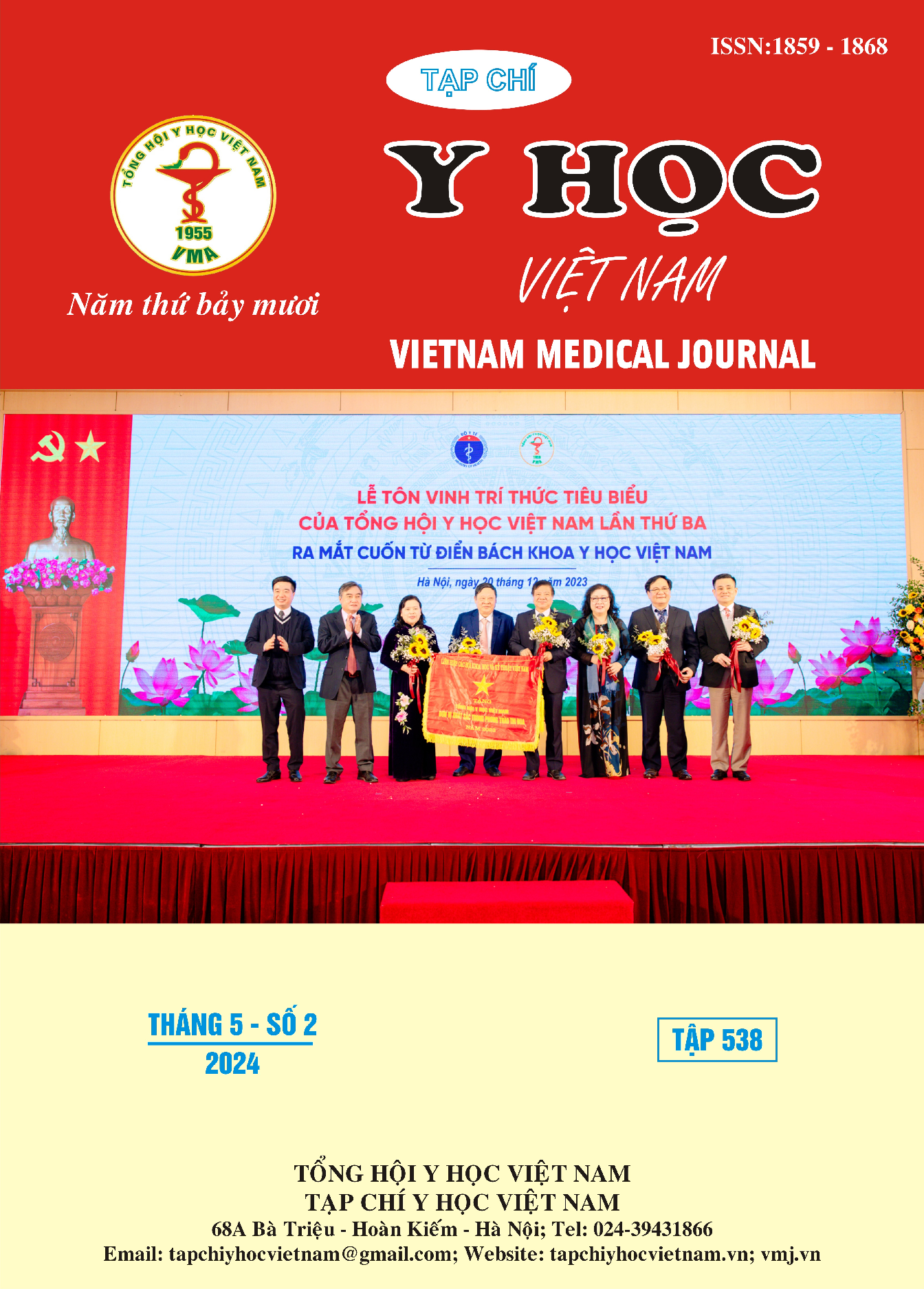THE SITTUATION AND RISK FACTORS OF LIVER FLUKE INFECTION CLONORCHIS SINENSIS IN HUMAN IN YEN LOC COMMUNE, KIM SON DISTRICT, NINH BINH PROVINCE
Main Article Content
Abstract
Backgrounds: Clonorchiasis infection is a food-borne infectious disease, causing great impact on public health. C. sinensis causes the most common disease among the three small liver fluke species. It is estimated that 35 million people are infected with C. sinensis in the world. Patients infected with small liver flukes are at risk of cholangiocarcinoma. Methods: Analytical descriptive study with cross-sectional surveys in 459 people over 18 years old at the study site. Result: The prevalence of infected C. sinensis in human in Yen Loc commune, Kim Son district, Ninh Binh province was 19,39%. 92% of cases were mild infectious intensity, the mean C. sinensis infection intensity was 241,92 ± 481,45 EPG. More male residents (28,44%) were infected with C. sinensis than female (11,20%) residents (p<0,05). People who use fresh manure in farming and animal husbandry were infected 2,04 times higher odds of infection than those who do not use it (95%CI: 1,21-3,43). People who eating raw fish were infected 7,17 times higher odds of infection than those who had never eaten raw fish (95% CI: 3,6-14,27). The prevalence of C. sinensis infection was highest in the group people that aet raw fish 1 times/week (p <0,05). Conclusion: The prevalence of infected C. sinensis in human in Yen Loc commune, Kim Son district, Ninh Binh province was 19,39%. The majority of cases were mild infectious intensity.
Article Details
Keywords
Clonorchis sinensis; eaten raw fish.
References
2. P. R. Torgerson và C. N. Macpherson (2011), "The socioeconomic burden of parasitic zoonoses: global trends", Vet Parasitol, 182(1), tr. 79-95.
3. X. Q. Cai, H. Q. Yu, J. S. Bai và các cộng sự. (2012), "Development of a TaqMan based real-time PCR assay for detection of Clonorchis sinensis DNA in human stool samples and fishes", Parasitol Int, 61(1), tr. 183-6.
4. Đoàn Thúy Hòa (2020), Nghiên cứu một số đặc điểm dịch tễ, thành phần loài sán lá gan nhỏ, sán lá ruột nhỏ tại hai huyện Kim Sơn và Yên Khánh, tỉnh Ninh Bình (2016-2019), Luận án Tiến sỹ y học, Viện Sốt rét - Ký sinh trùng - Côn trùng trung ương.
5. Luơng Thị Phương Lan (2016), Đánh giá hiệu quả can thiệp cộng đồng phòng chống nhiễm sán lá gan nhỏ của người dân tại thị trấn Rạng Đông, huyện Nghĩa Hưng, tỉnh Nam Định năm 2009 - 2012, Luận án Tiến sỹ Y Tế Công cộng, Đại học Y Tế công cộng.
6. Nguyeễn Thị Thanh Huyền (2018), Nghiên cứu một số đặc điểm dịch tễ nhiễm sán lá nhỏ và hiệu quả can thiệp tại một số điểm thuộc tỉnh Bắc Giang và Bình Định, năm 2016 - 2017, Viện Sốt rét - Ký sinh trùng - Côn trùng Trung ương.
7. T. T. B. Nguyen, V. Dermauw, H. Dahma và các cộng sự. (2020), "Prevalence and risk factors associated with Clonorchis sinensis infections in rural communities in northern Vietnam", PLoS Negl Trop Dis, 14(8), tr. e0008483.
8. J. Sun, H. Xin, Z. Jiang và các cộng sự. (2020), "High endemicity of Clonorchis sinensis infection in Binyang County, southern China", PLoS Negl Trop Dis, 14(8), tr. e0008540.
9. Meng Xu, Yanyan Jiang, Jianhai Yin và các cộng sự. (2021), "Risk Factors for Clonorchis sinensis Infection in Residents of Binyang, Guangxi: A Cross-Sectional and Logistic Analysis Study", Frontiers in public health, 9, tr. 588325-588325.
10. V. T. Phan, A. K. Ersbøll, D. T. Do và các cộng sự. (2011), "Raw-fish-eating behavior and fishborne zoonotic trematode infection in people of northern Vietnam", Foodborne Pathog Dis, 8(2), tr. 255-60.


